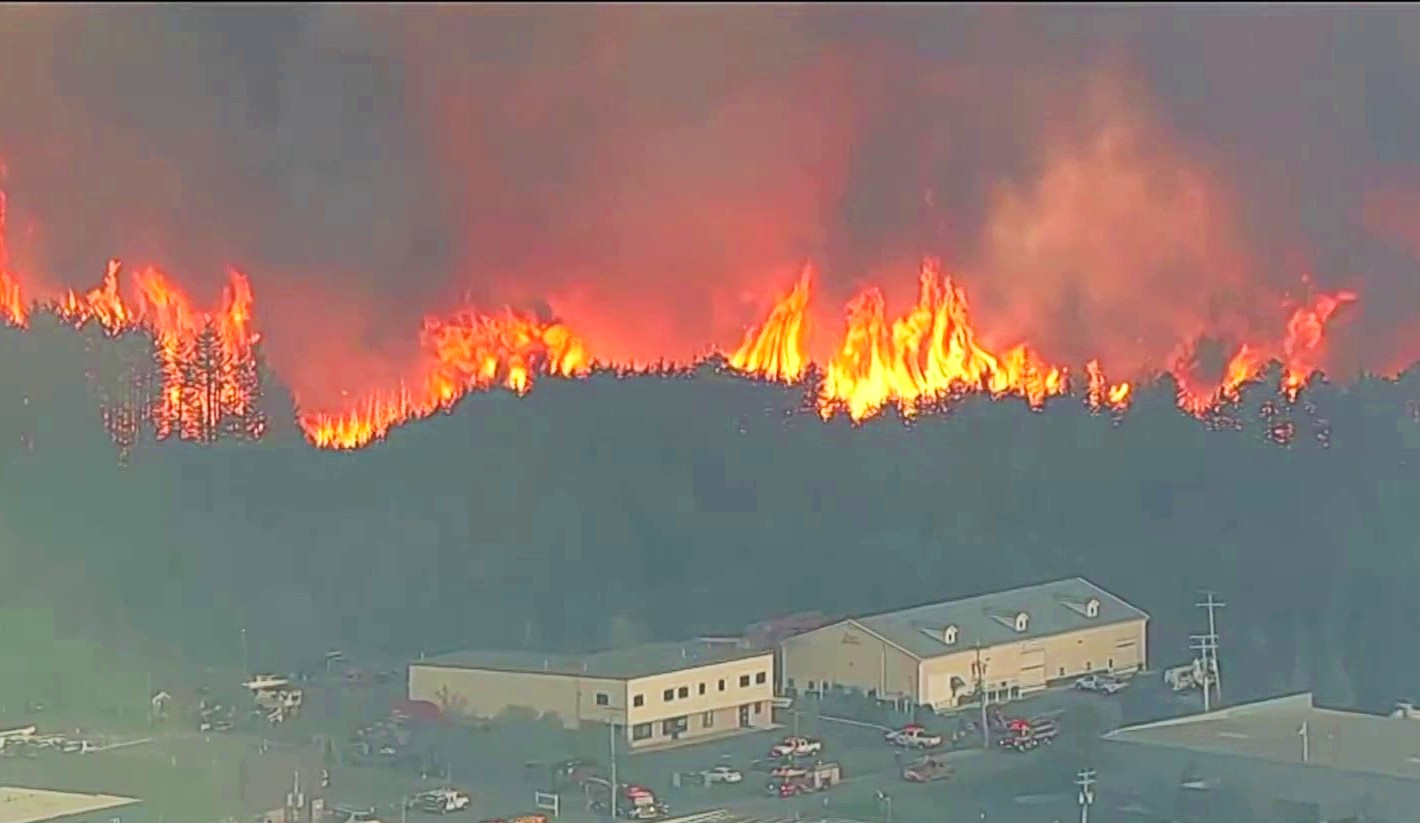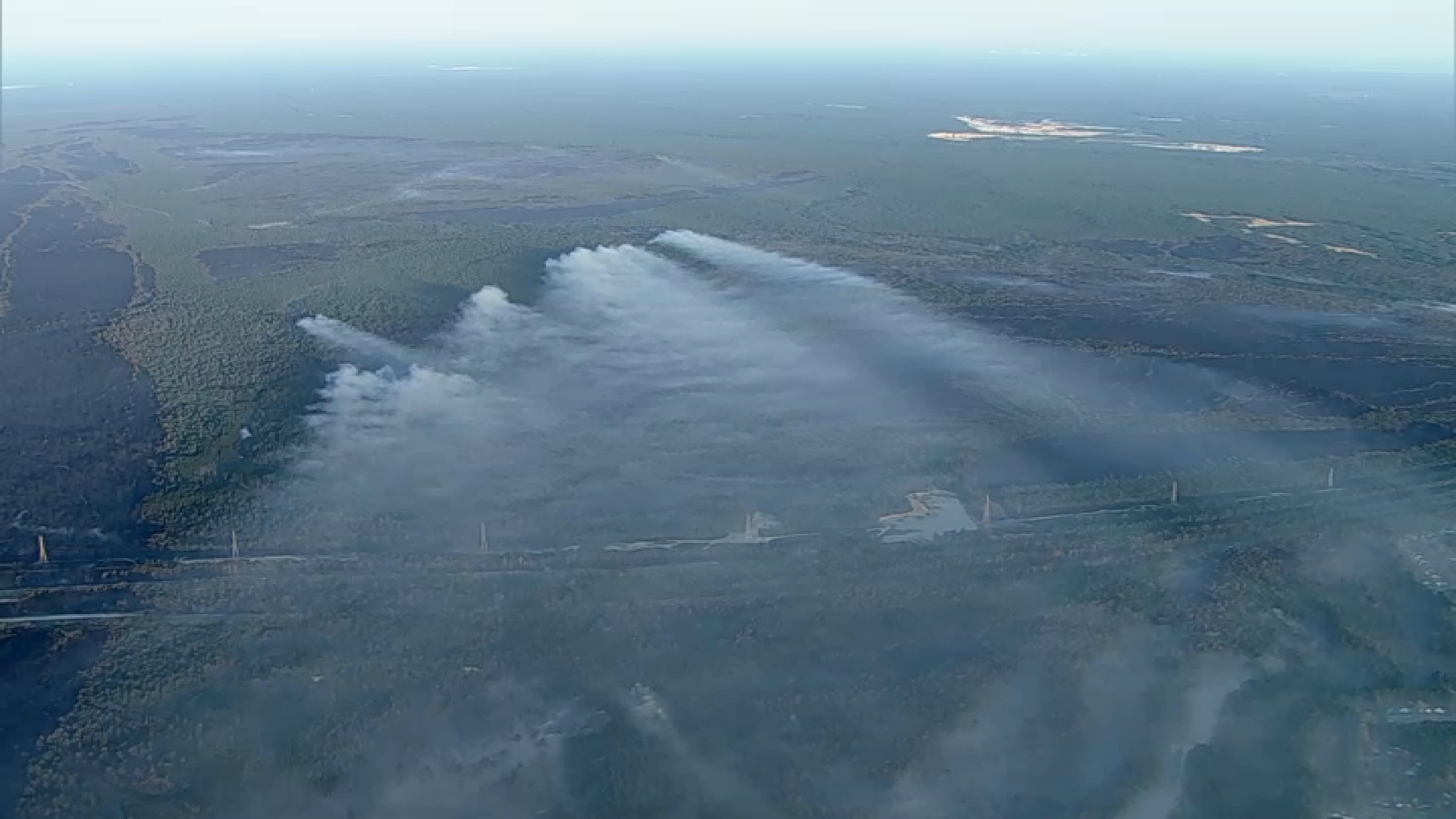NJ Wildfire: Evacuation Orders Lifted! What You Need To Know
Relief in New Jersey: Wildfire Evacuation Orders Lifted!
Introduction: A Breath of Fresh Air After the Blaze
Just imagine the collective sigh of relief echoing across New Jersey. After a tense few days, filled with smoky skies and the uncertainty of a raging wildfire, evacuation orders have finally been lifted! The Jones Road Fire, a fast-moving blaze that threatened thousands of homes and disrupted travel, is now under control enough for residents to return. Let's dive into the details of this dramatic event and the recovery efforts underway.
The Jones Road Fire: A Fiery Threat
The wildfire, dubbed the Jones Road Fire, quickly gained notoriety for its rapid spread. Fueled by dry conditions and strong winds, it blazed through the heart of the Pine Barrens, a unique and ecologically significant region of New Jersey.
Rapid Spread and Initial Response
What started as a localized incident quickly escalated, becoming a major concern for local authorities. The New Jersey Forest Fire Service sprang into action, deploying crews and resources to combat the flames.
Threat to Structures and Residents
More than 1,300 structures were directly threatened by the fire, and approximately 3,000 residents faced the agonizing decision of whether or not to evacuate. Can you imagine the anxiety of packing your belongings and leaving your home, not knowing if it will still be there when you return?
Evacuation Orders and Emergency Shelters
Faced with the imminent danger, authorities issued mandatory evacuation orders for certain areas in Ocean and Lacey Townships. The focus was on ensuring the safety of residents and preventing any potential loss of life.
Designated Evacuation Zones
Specific zones were designated for evacuation, and residents were urged to heed the warnings and follow the instructions of emergency personnel. Clear communication was key in ensuring a smooth and orderly evacuation process.
High Schools as Safe Havens
Recognizing the need for temporary housing, local high schools were transformed into emergency shelters. These shelters provided a safe and secure environment for evacuees, offering food, water, and a place to rest.
The Garden State Parkway: A Highway Disrupted
The Jones Road Fire didn't just impact residential areas; it also had a significant effect on transportation. The Garden State Parkway, a vital artery for travel in New Jersey, was forced to close.
Closure of a Critical Stretch
A roughly 7-mile stretch of the Parkway, located in the southern part of the state, was shut down as a precautionary measure. The closure caused major traffic delays and disruptions for commuters and travelers alike.
Safety First: Prioritizing Public Well-being
While the closure was undoubtedly inconvenient, it was a necessary step to ensure the safety of motorists. The risk of driving through a wildfire zone, with reduced visibility and potential for flying embers, was simply too great.
The Lifted Evacuation Orders: A Turning Point
The news everyone was waiting for finally arrived on Wednesday morning: evacuation orders were lifted! This marked a significant turning point in the fight against the Jones Road Fire, signaling that the situation was improving.
Signs of Progress and Containment
The lifting of the evacuation orders was a direct result of the hard work and dedication of firefighters and emergency responders. Their efforts had successfully contained the fire, reducing the immediate threat to residents and structures.
A Cautious Return Home
While the evacuation orders were lifted, authorities urged residents to exercise caution upon returning home. They advised checking for any signs of damage, such as downed power lines or structural instability. It's always better to be safe than sorry!
Understanding the Pine Barrens: A Unique Ecosystem
The Jones Road Fire serves as a reminder of the importance of understanding and protecting the Pine Barrens, a unique and fragile ecosystem.
Ecological Significance
The Pine Barrens is a vast expanse of forests, wetlands, and waterways that is home to a diverse array of plant and animal life. It's a critical habitat for many endangered and threatened species.
Fire's Role in the Ecosystem
Interestingly, fire is a natural part of the Pine Barrens ecosystem. Historically, controlled burns have been used to manage the vegetation and reduce the risk of larger, more destructive wildfires. However, uncontrolled wildfires, like the Jones Road Fire, can have devastating consequences.
The Aftermath: Recovery and Rebuilding
Even with the fire contained and evacuation orders lifted, the work is far from over. The recovery process will be long and challenging, requiring a coordinated effort from government agencies, community organizations, and individual residents.
Assessing the Damage
The first step in the recovery process is to assess the extent of the damage caused by the fire. This includes evaluating the impact on homes, businesses, and the surrounding environment.
Supporting Affected Communities
Providing support to affected communities is crucial. This includes offering financial assistance, counseling services, and resources to help residents rebuild their lives. We all need a helping hand sometimes.
Preventing Future Wildfires: A Shared Responsibility
The Jones Road Fire underscores the importance of wildfire prevention. We all have a role to play in protecting our communities from the devastating effects of these blazes.
Fire Safety Tips for Residents
There are several simple steps that residents can take to reduce the risk of wildfires, such as:
- Clearing brush and debris around homes
- Properly disposing of cigarettes and other smoking materials
- Being cautious when using outdoor grills and fire pits
- Reporting any suspicious activity
The Importance of Public Education
Public education campaigns are essential for raising awareness about wildfire prevention. By informing people about the risks and providing practical tips, we can create a culture of fire safety.
How You Can Help: Supporting Relief Efforts
If you're looking for ways to help those affected by the Jones Road Fire, there are several organizations that are accepting donations and volunteers.
Donating to Relief Funds
Consider donating to reputable relief organizations that are providing direct assistance to fire victims. Your contribution, no matter how small, can make a big difference.
Volunteering Your Time and Skills
If you have the time and skills, volunteering is another great way to support the relief efforts. Organizations often need volunteers to help with tasks such as sorting donations, preparing meals, and assisting with cleanup efforts.
The Role of Technology in Wildfire Management
Technology is playing an increasingly important role in wildfire management, from early detection to suppression efforts.
Satellite Imagery and Drones
Satellite imagery and drones are used to monitor wildfires in real-time, providing valuable information about their size, spread, and intensity. This data helps firefighters make informed decisions and allocate resources effectively.
Advanced Firefighting Equipment
Advanced firefighting equipment, such as air tankers and specialized vehicles, is used to combat wildfires more efficiently. These tools allow firefighters to reach remote areas and suppress flames quickly.
The Economic Impact of Wildfires
Wildfires can have a significant economic impact, affecting everything from tourism to agriculture.
Damage to Property and Infrastructure
Wildfires can cause extensive damage to property and infrastructure, including homes, businesses, roads, and power lines. The cost of repairs and replacements can be substantial.
Impact on Tourism and Recreation
Wildfires can also negatively impact tourism and recreation, as people are less likely to visit areas affected by smoke and fire. This can lead to significant economic losses for local businesses.
The Emotional Toll of Wildfires
Beyond the physical and economic impacts, wildfires can also take a heavy emotional toll on individuals and communities.
Stress and Anxiety
The experience of evacuating from a wildfire can be incredibly stressful and anxiety-inducing. People may worry about the safety of their homes, their loved ones, and their pets.
Long-Term Trauma
For some people, the trauma of a wildfire can have long-lasting effects. They may experience nightmares, flashbacks, and other symptoms of post-traumatic stress disorder (PTSD).
Conclusion: Moving Forward After the Blaze
The Jones Road Fire was a stark reminder of the power and unpredictability of nature. While the lifting of evacuation orders is a welcome relief, it's important to remember that the recovery process is just beginning. By working together, we can support affected communities, prevent future wildfires, and protect our precious natural resources. The collective effort to ensure the well-being of all, will lead to a faster more effective recovery.
Frequently Asked Questions (FAQs)
- What caused the Jones Road Fire? The exact cause is still under investigation, but wildfires can be sparked by various factors, including human activity (like unattended campfires) and natural events (like lightning strikes).
- How can I prepare my home for a wildfire? Create a defensible space by clearing brush and debris around your home. Also, have an emergency plan and a go-bag ready in case of evacuation.
- Where can I find reliable information about wildfires? Stay updated through official sources like the New Jersey Forest Fire Service, local news outlets, and emergency management agencies.
- What should I do if I see a wildfire? Immediately report it to 911 or your local fire department. Provide the location, size, and any other relevant details.
- How long does it take for a forest to recover after a wildfire? The recovery time depends on the severity of the fire and the type of forest. It can take anywhere from a few years to several decades for a forest to fully regenerate.



